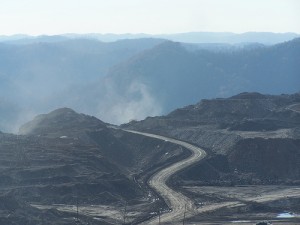You could say that the two major clean water policy decisions emerging from Washington last week are victories for water quality; or you could say that they bring us right back to where we should have been all along. The first was EPA’s proposed rule on what constitutes waters of the United States – the technical term that defines Clean Water Act (CWA) coverage around the country. The second was the Supreme Court’s refusal to hear a case challenging EPA’s authority to veto a permit for mountaintop removal coal mining in West Virginia.
We blogged about the confusion over CWA coverage back in November, when EPA released a scientific report showing that intermittent and ephemeral headwaters and wetlands were biologically, chemically and physically linked to larger rivers and streams that were clearly navigable. Two Supreme Court cases (in 2001 and 2006) triggered by groups seeking a narrow definition of CWA coverage had mostly just confused the issue and made EPA gun shy about enforcing potential violations in these kinds of waters. The scientific report is still being reviewed by EPA’s external Scientific Advisory Committee, but EPA and the Army Corps of Engineers have moved forward anyway. Last week, they announced a proposed rule that specifically applies CWA protections to most seasonal and rain dependent streams, and to wetlands near rivers and streams. The agencies will evaluate other types of waters with more diffuse connections to rivers and streams on a case-by-case basis. After a 90-day public comment period the rule will become final.
For those who have always known that we all live downstream, this seems like a no-brainer. But given the Supreme Court confusion and opposition by some industry and farm groups to widespread CWA coverage, EPA was forced to act more formally. As the agency explained in a press release:
“About 60 percent of stream miles in the U.S. only flow seasonally or after rain, but have a considerable impact on the downstream waters. And approximately 117 million people – one in three Americans – get drinking water from public systems that rely in part on these streams. These are important waterways for which EPA and the Army Corps is clarifying protection.”
In a YouTube video, EPA Administrator Gina McCarthy maintains that the rule doesn’t actually change what’s been protected historically under CWA, it just clarifies the definitions in the wake of Supreme Court decisions that had derailed effective implementation for the past 15 years. And the exemptions for normal farming operations that have always been honored will remain, including specific exemptions for Natural Resources Conservation Service (NRCS) practices to protect soil and water. (You can see a full list of NRCS agricultural exemptions here.)

The second action (or rather, inaction) confirms another EPA authority: To veto permits issued by the Army Corps of Engineers that allow mining companies to dump the tops of mountains into valley streams below. In 2007, the Army Corps had approved a permit to Arch Coal, Inc. to dump 110 million cubic yards of coal mine waste from their Spruce No. 1 mine into six miles of streams in Logan County, West Virginia, destroying all life within those streams. In 2011, EPA vetoed the permit retroactively, citing new information concerning the likely impacts of the mine. The coal company appealed, and the Supreme Court’s decision last week not to hear the case means the lower court ruling affirming EPA’s authority stays in place.
Even so, this most likely doesn’t signal a sea change in protection of mountain streams. EPA has used its CWA permitting veto authority — for any proposed action – only 12 times since the CWA’s birth in 1972. It and the Corps have allowed mining companies to eliminate thousands of ridgetops in Appalachia over the past 30 years and dump their remains in nearby streams. In the Spruce Mine No. 1 case, EPA cited exceptional circumstances triggering its veto. Given the obvious impacts of mountaintop removal downstream, it’s hard to understand what’s exceptional about this case. But it’s good to know that when EPA decides it’s time to enforce the law, it can.

